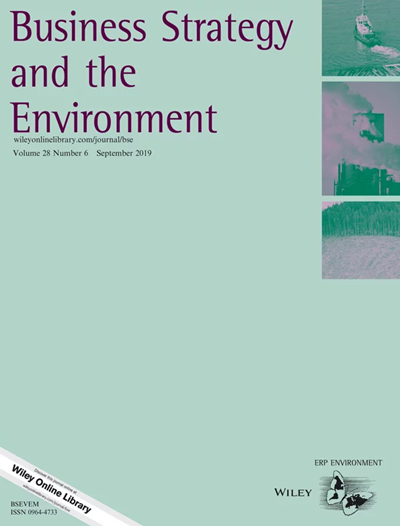Unlocking Sustainability: A Hierarchical Approach to Environmental Dynamic Capabilities in Supply Chain Transformation
IF 13.3
1区 管理学
Q1 BUSINESS
引用次数: 0
Abstract
This study addresses the challenges posed by globalization, sustainability, and rapid technological change, which increase the complexity and dynamism of the business environment. To tackle these challenges, companies must transition from traditional, static approaches to a more systemic, integrated, and dynamic perspective. Achieving sustainable supply chains requires integrating environmental innovations and dynamic capabilities within the green supply chain management (GSCM) framework. This research proposes and empirically validates a hierarchy of environmental dynamic capabilities based on the dynamic capability view (DCV) and GSCM approaches. Furthermore, it examines the contingency effects of firm size, age, and export orientation using contingent theory (CT). The theoretical model underwent testing through a survey involving 261 individuals in Colombia's manufacturing industry. The findings confirm the existence of a hierarchy of environmental dynamic capabilities, where high‐order capabilities influence the creation, transformation, and reconfiguration of lower order capabilities to address environmental protection and sustainability challenges. Additionally, only firm size was found to positively moderate the development of environmental dynamic capabilities. This study makes a significant contribution by being the first to propose and empirically validate a hierarchical model of environmental dynamic capabilities. The findings provide valuable insights for managers to refine sustainability strategies, improve forecasting, and manage risks. The study highlights the importance of synergy between higher order capabilities in achieving sustainability in supply chains rather than relying on independent efforts. The proposed hierarchy serves as a framework for policymakers to make informed decisions, focus critical investments, and promote interorganizational and interindustrial relationships for a smoother sustainable transition.解锁可持续性:供应链转型中环境动态能力的分层方法
本研究解决了全球化、可持续性和快速技术变革带来的挑战,这些挑战增加了商业环境的复杂性和活力。为了应对这些挑战,公司必须从传统的静态方法转变为更系统、更集成、更动态的视角。实现可持续供应链需要在绿色供应链管理(GSCM)框架内整合环境创新和动态能力。本研究提出并实证验证了基于动态能力观(DCV)和GSCM方法的环境动态能力层次。此外,本文运用权变理论考察了企业规模、年龄和出口导向的权变效应。该理论模型通过对哥伦比亚制造业261人的调查进行了检验。研究结果证实了环境动态能力层次结构的存在,其中高阶能力影响低阶能力的创建、转换和重新配置,以应对环境保护和可持续性挑战。此外,只有企业规模对环境动态能力的发展具有正向调节作用。本研究首次提出并实证验证了环境动态能力的层次模型,具有重要的意义。研究结果为管理者完善可持续发展战略、改进预测和管理风险提供了有价值的见解。该研究强调了高阶能力之间协同作用的重要性,以实现供应链的可持续性,而不是依赖于独立的努力。提出的层次结构作为政策制定者做出明智决策的框架,重点关注关键投资,促进组织间和行业间的关系,以实现更顺利的可持续过渡。
本文章由计算机程序翻译,如有差异,请以英文原文为准。
求助全文
约1分钟内获得全文
求助全文
来源期刊

Business Strategy and The Environment
Multiple-
CiteScore
22.50
自引率
19.40%
发文量
336
期刊介绍:
Business Strategy and the Environment (BSE) is a leading academic journal focused on business strategies for improving the natural environment. It publishes peer-reviewed research on various topics such as systems and standards, environmental performance, disclosure, eco-innovation, corporate environmental management tools, organizations and management, supply chains, circular economy, governance, green finance, industry sectors, and responses to climate change and other contemporary environmental issues. The journal aims to provide original contributions that enhance the understanding of sustainability in business. Its target audience includes academics, practitioners, business managers, and consultants. However, BSE does not accept papers on corporate social responsibility (CSR), as this topic is covered by its sibling journal Corporate Social Responsibility and Environmental Management. The journal is indexed in several databases and collections such as ABI/INFORM Collection, Agricultural & Environmental Science Database, BIOBASE, Emerald Management Reviews, GeoArchive, Environment Index, GEOBASE, INSPEC, Technology Collection, and Web of Science.
 求助内容:
求助内容: 应助结果提醒方式:
应助结果提醒方式:


